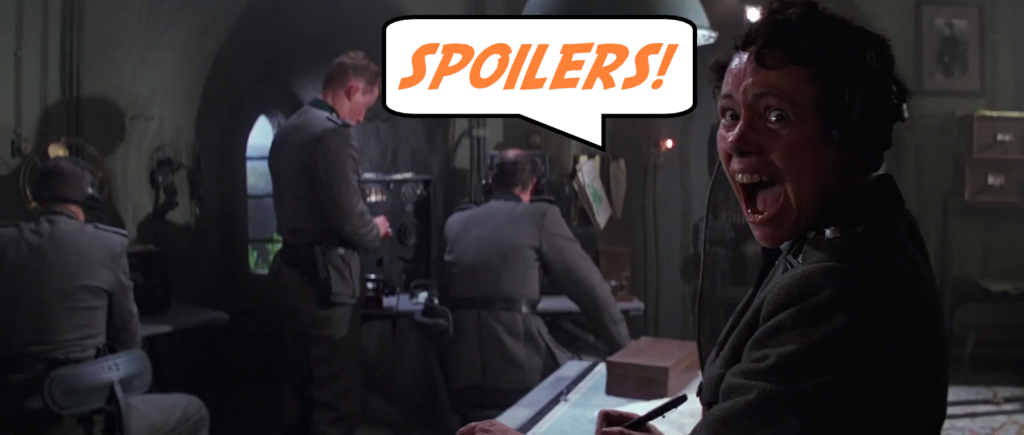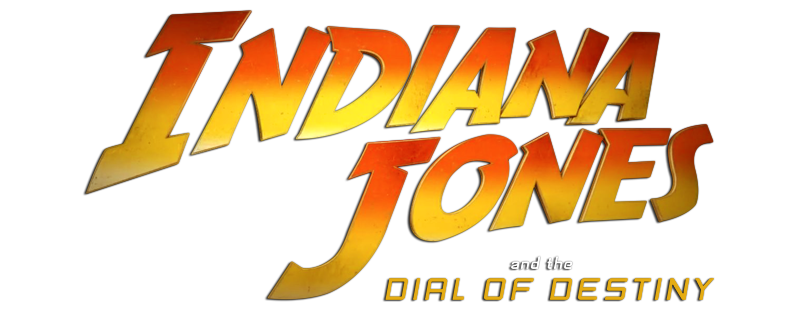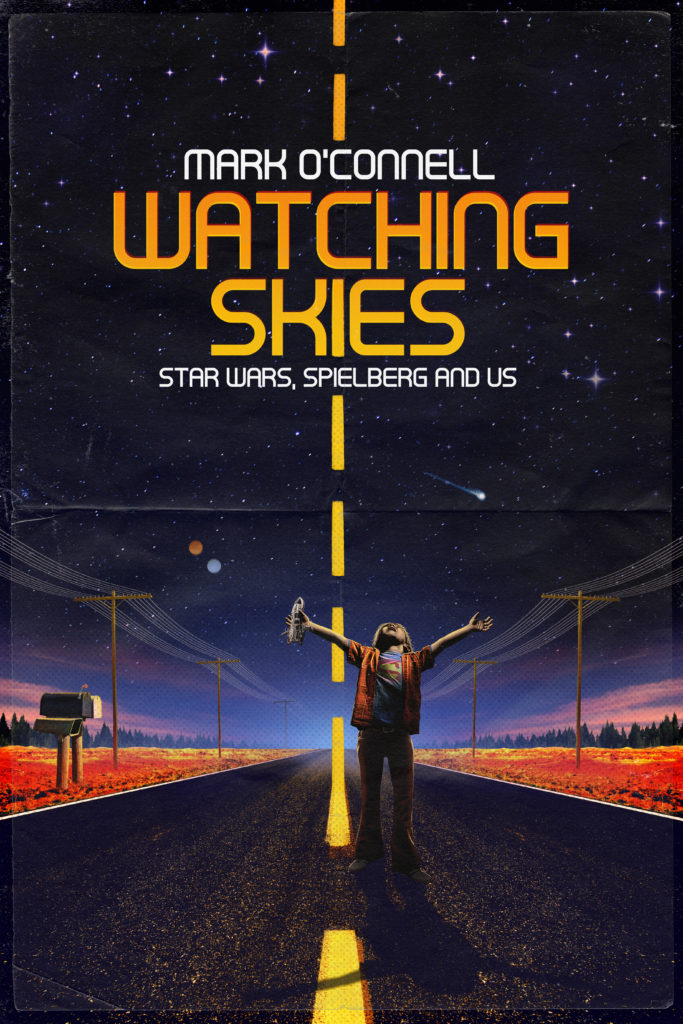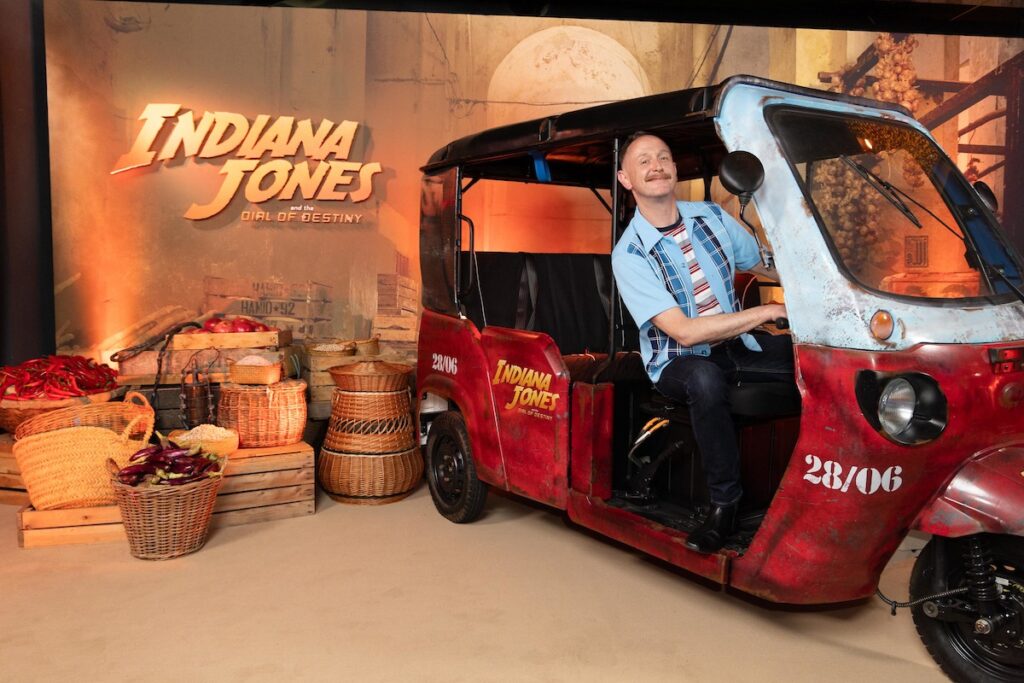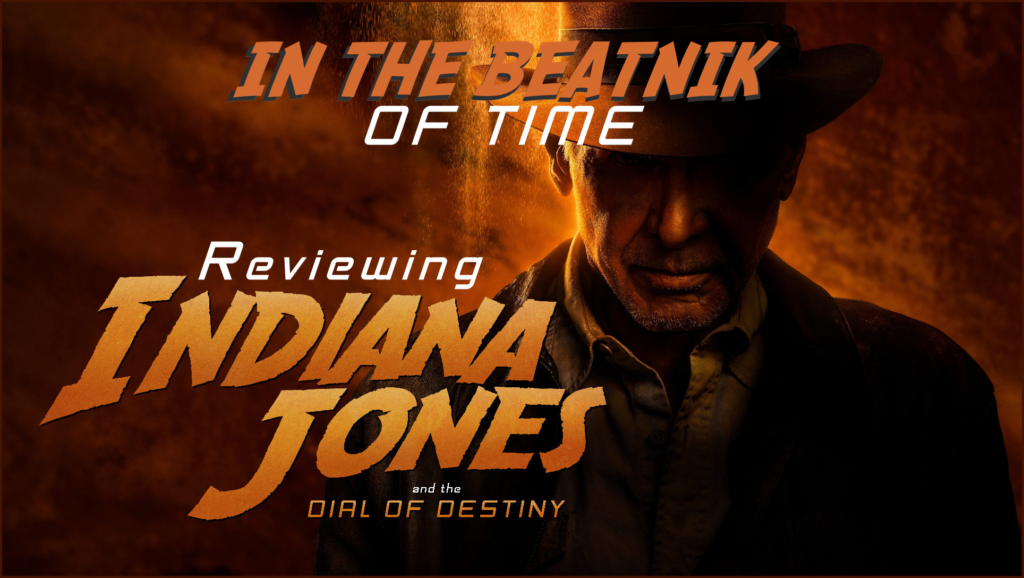
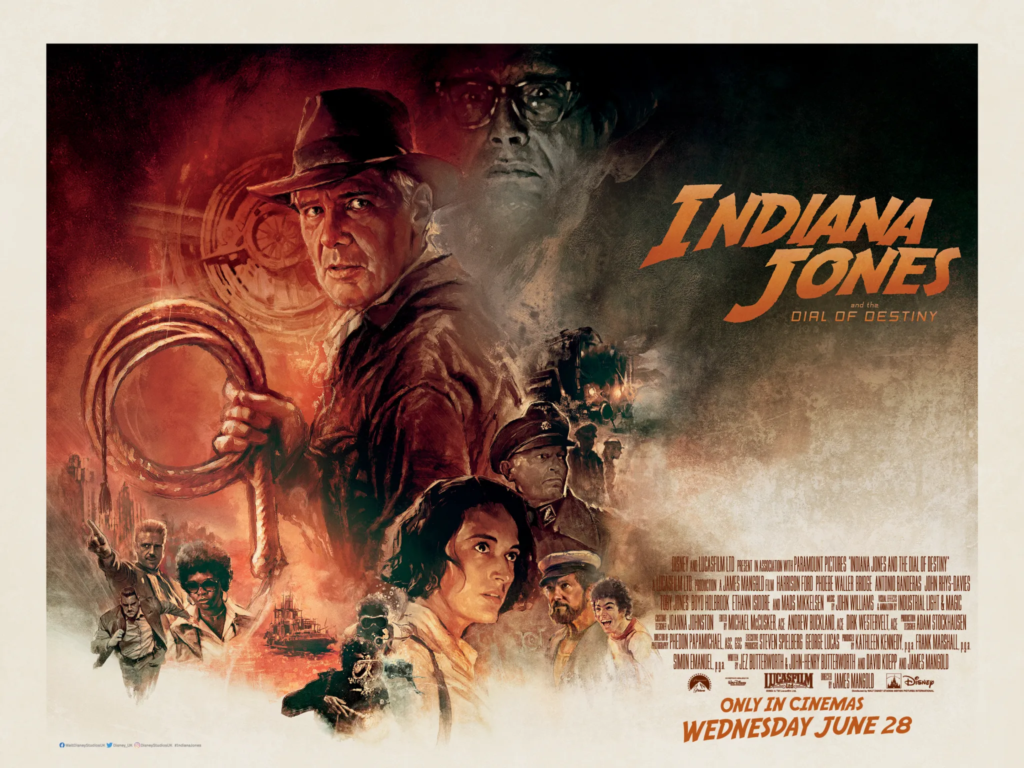
From the Well of the Souls to Soul Train, Sankara Stones to shrieking stoners, and the Canyon of the Crescent Moon to the moon landings, Indiana Jones and the Dial of Destiny finds Dr. Henry Jones Jr. in a very different world. His own sands of time are running out, a retirement clock is being handed to him by a faculty who do not know him, he’s an old, lonely man in a New York tenement surrounded by a hot summer, hot tunes and hot students, Sesame Street wakes him up on the TV, and the kids and headlines are obsessing over the moon landings a month before.
Almost at the real moment in history that film students Steven Spielberg and George Lucas first met and were soon to open a new Ark of blockbuster cinema, visual effects, technological strides and producing authorship, Dial of Destiny is set in a 1969 world of the very baby boomers who forged the Indiana Jones film series. This is the adventure the furthest from the war-time contexts of the saga. This is a more travelled world we find Indy navigating where it is tourists rather than bugs that now swarm over ancient archeological sites. This film is also the first Indy movie that sees our hero actually on active duty slap bang in the heart of World War Two rather than its historical bookends. The previous chapters toyed with the rise of Nazism but – maybe understanding the realities of what really happened in the war – director Steven Spielberg (Schindler’s List) did not want to make light of the real horrors at play.
‘I’ve believed in magic a few times in my life. I’ve seen things… things I can’t explain. I’ve come to believe it’s not so much what you believe… it’s how hard you believe it.’
DR. HENRY JONES JR, INDIANA JONES AND THE DIAL OF DESTINY
With more story precision and successful franchise intent than 2008’s Indiana Jones and the Kingdom of the Crystal Skull, this is an autumnal look at a cinematic icon that curiously makes less old man gags and barbs than the previous adventure. That scarred chin of Dr. Jones is now framing a quivering soul facing irrelevance in a space race world, students chasing Santana more than Sankara, and the dangers of unhinged far-right humanity re-emerging in any era. The Manson murders, Woodstock, the Zodiac killer, the death of Brian Jones and gay politics about to change forever on New York’s Christopher Street. Whilst not part of the narrative of the Dial of Destiny, the tumultuous summer of 1969 is still very much the milieu of this film.
Forty-two years after Raiders of the Lost Ark, this is curiously one of Harrison Ford’s best spins of the character. It is quietly devastating to witness such a lonely, isolated Indy unable or even unwilling to flick off his backstory sadness like bugs in a Pankot cave. In the year Short Round (Ke Huy Quan) nabs an Academy Award before Dr. Jones, this is arguably Ford’s strongest performance in the role. With a grizzled, reluctant smile, an angry bound into a neighbour’s apartment, an eye-rolling annoyance at new generation gangsters and the stark realization he is a relic of the past chasing relics of an even more distant past – this is an Indy who is back at that Cairo bar downing his sadness and whisky shots on his own. The parched story map of the Dial of Destiny is now the years, mileage and lines of Indiana’s face as he resists his futures, and mourns so many friends, lovers, colleagues and family stalwarts. Ford has always shone through the pyrotechnics and RKO dressing of the Indy saga to present a hero with strident principles, a resolve for good and an independent, educated spirit to do the right thing. When The Kingdom of the Crystal Skull was making such a continual play of big set-pieces and stunt-work, here many a moment that could have easily segued into cobwebbed jeopardy instead just focuses on its leading man and lets this winter chapter of his rich movie registry breath.
It has been thirty-four years since Dr. Jones last battled with The Third Reich. Not his only onscreen nemesis, it is however his most iconic. However, just as The Kingdom of the Crystal Skull spent too long disguising it was ultimately a 1957 UFO movie, Dial of Destiny misses a fantastic chance to really stitch the Nazis into the space race, those Gene Krantz NASA guys in Houston, fiery rocket launches, and a global TV audience. Might Indy have not had at least one world-weary quip during the Apollo 11 celebrations about how he went there first with men from Mars and UFOs? We know the historically true addition that Mikkelsen’s villainous scientist has helped the US with its space race ambitions, yet this is mostly in the wings of the story. It has already happened.
‘I miss the desert. I miss the sea. I miss waking up every morning wondering what wonderful adventure the new day will bring to us.’
SALLAH, INDIANA JONES AND THE DIAL OF DESTINY
Whilst Dial of Destiny arguably misses the masterclass palette and parched danger of Raiders of the Lost Ark, the dark savagery of Temple of Doom, the familial grace of The Last Crusade, and the Americana and era-aware beats of Crystal Skull, it reflects its pop culture era in other ways.
Gone are the golden era colouring, characters and sweeping vistas of the original trilogy. Yet, they were absent from 1969 too. TV had crushed the ailing fortunes of the old behemoth movie studios and their yesteryear sense of movie caper. Here pop-culture is now a counter-culture of Midnight Cowboy, Easy Rider, anti-Vietnam jukeboxes, every young adventurer trying their chances and hash pipes in Morocco, and Nixon-weary student drifters straight from Steven Spielberg’s Amblin’ (1969).
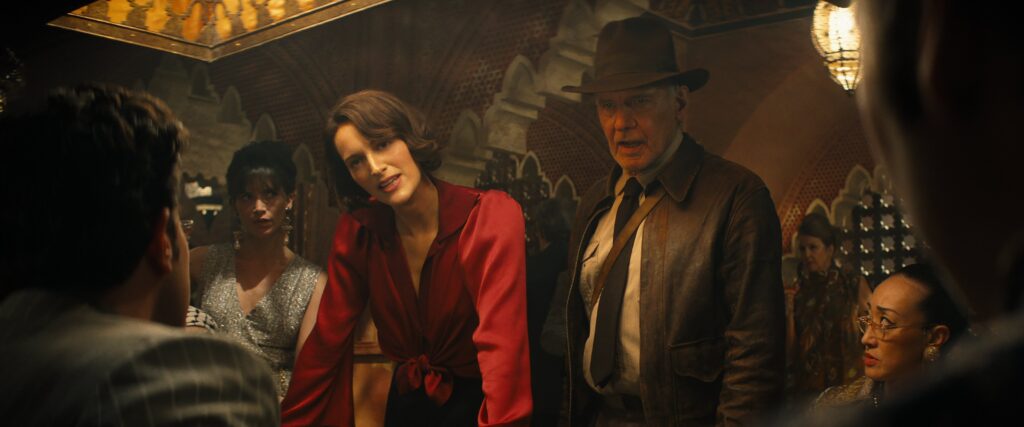
The Dial of Destiny does lack Spielberg’s sense of horizon scope. And sense of blocking and framing telling the story too. Instead of just those lush, lyrical vistas associated with the series, cinematographer Phedon Papamichael (Ford V. Ferrari, Walk the Line) opts for an almost late 1960s National Geographic meets Jacques Cousteau documentary palette. The warm 1940s matinee glow of the Indy films is not here as much. And that is because it was not in late 1960s cinema either. Full of the new cars, polyester patterns and turtle necks of 1969, the Sicily and Morocco scenes almost echo the unstable dyes, bleached hues and magazine printing of the 1960s. And the more commonplace routine of air travel by the time of 1969. The rainy, dank 1944 World War Two opener reminds of JJ Abrams’ Overlord (2018). And Papamichael’s photography remembers his own work on Aaron Sorkin’s The Trial of the Chicago 7 (2020) – with its similar era of beatnik blues, leather mods, hooped earrings and handle-bar stache rebellions.
‘You did not win the war. Hitler lost it.’
Dr. Jurgen voller, indiana jones and the dial of destiny
Whilst Dial of Destiny does continue the expected tropes of fathers, street kid sidekicks who can pilot anything, dusty academia, caves full of bugs, house raiding Nazis and notebook obsessions, it is no ‘Anything Goes’ Easter egg orgy either. When the frames and dialogue hanker alongside familiar beats of the Indy saga, this film does not actually need to. Admittedly, the tuk-tuk chase possibly stretches its welcome and this film’s snake/rat/bug pit moment is not nearly long enough. The denouement may slip into The History of the World, Part 1 territory, but it also wild and jaw-dropping to witness Indy go there. And there are way more story breadcrumbs dropped earlier on than you think.
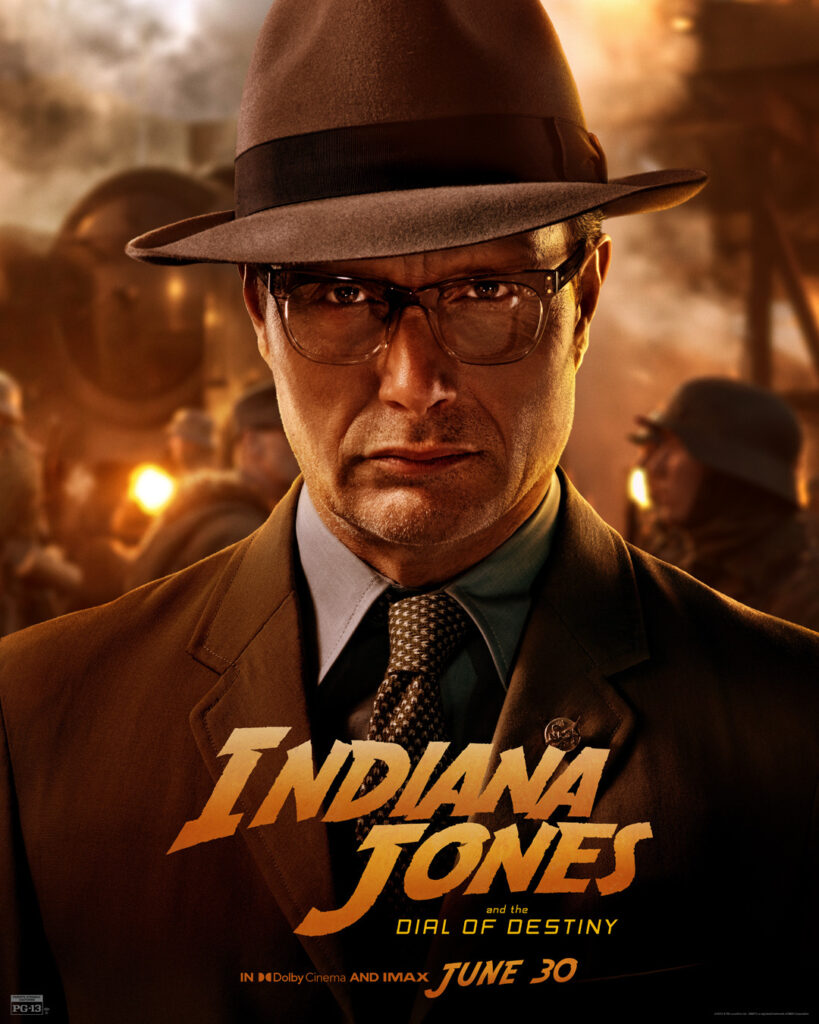
One can argue that Mads Mikkelsen’s Jürgen Voller is a tomb raid of Raiders of the Lost Ark‘s Belloq (Paul Freeman). But so too was The Last Crusade‘s Walter Donovan (Julian Glover). One could suggest the physical action is very comic book. But any more comic book than escaping a rolling boulder, using a rubber dinghy as a parachute and battling brainwashed Thugees in a mine-car chase?! For a romp that is part predicated on the ancient Greeks, it seems wrong that the fortunes and perceived glories of the Dial of Destiny could be decided by a Greek chorus of some movie fans online rising from their nostalgias like screeching phantoms. Keep your tweets closed, Marion. Whatever you do, don’t look at them!
And whilst this fifth crack of the whip could well have pushed a 1969 villain, the franchise-jumping skills, Danish charm and crystal skull cheekbones of Mads Mikkelsen more than suffice. A quietly chilling coda of his Voller quizzing a black hotel waiter on ‘where are you from originally?‘ is not just some idle nod to 1930s Nazism. It is a knowing cat-call from 2023 racists. Migrants and middle eastern characters here are not irritants. Or warnings. They are family and lifelong pals. Voller’s sinister nod to his henchman to conduct an off-frame murder of the waiter is a mindful slither of the very real black politics in America in 1969. And the very real principles of the Indiana Jones franchise. As some inane comments fire like Messerschmitt bullets at the tail plane of the Indy franchise about how the films are forcing some ‘woke!’ ideology, it is worth remembering Dr. Henry Jones has always slept with one eye open to the world and that punching Nazis, resourceful women, looking after street kids, Middle Eastern besties, a sceptical take on religion and liberating slave children has always been his thing since 1981.
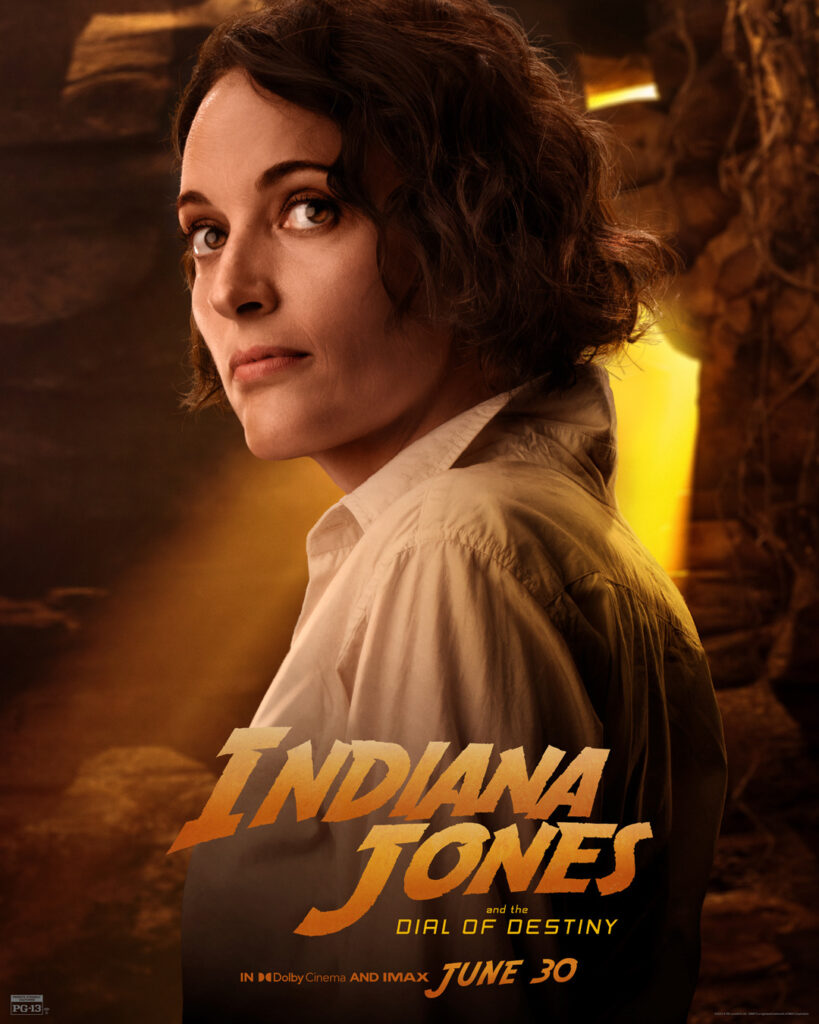
Whilst she has sartorial, duplicitous and character echoes of both Raiders‘ Marion Ravenwood (Karen Allen) and The Last Crusade‘s Elsa Schneider (Alison Doody), perhaps Phoebe Waller-Bridge’s plucky Helena Shaw is the stand-out star of Dial of Destiny. She is easily the best casting call of this chapter. And is the much welcome momentum, pluck and attitude of the piece as Harrison Ford’s grizzled Bogart takes on Waller-Bridge’s Katharine Hepburn in The Syracuse Queen.
Voller’s henchmen are from Central Casting at best and merely functional. Boyd Holbrook is styled like a meddling NASA’s G-man, but has very little to do. Likewise, Shaunette Renée Wilson’s Mason is an almost fascinating figure in the film. The first black female character in the Indy saga and one who comes off the back of that dark racism from Mikkelsen’s Voller, Mason feels like that Nazi castle drawbridge was lifted up way too soon on her character. Her demise also underlines an odd tic of the Dial of Destiny. In a beat of history that saw political figures and potential presidents shot viciously at close range, this film has some oddly unpleasant and unexpected deaths of onscreen innocents that the franchise has never shown before. In another time, the Dial of Destiny clearly had something different in mind for Mason.
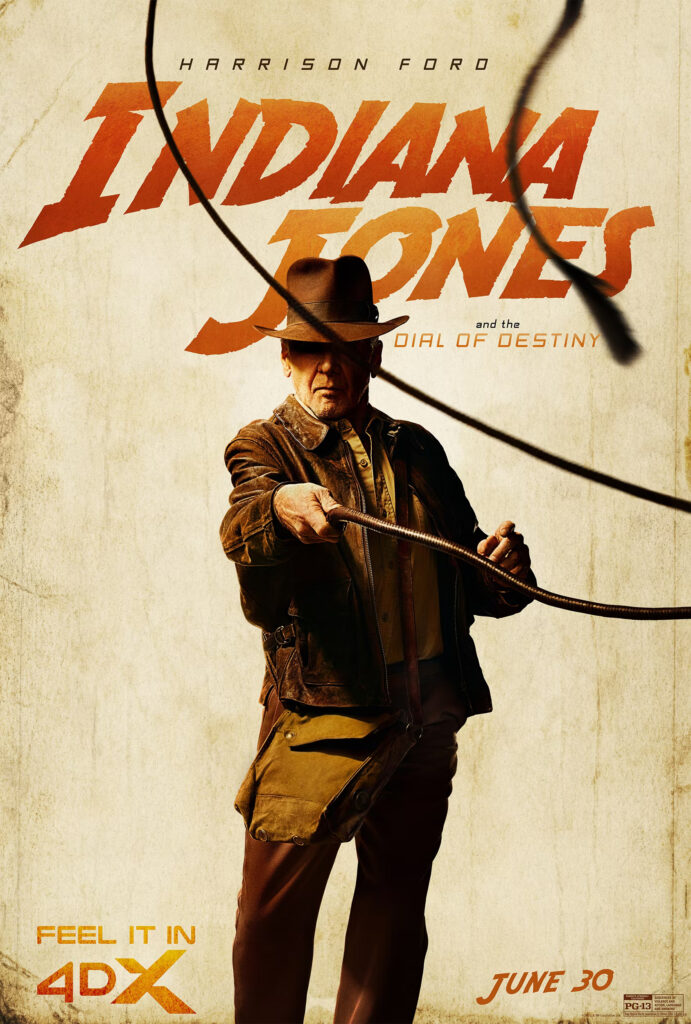
John Rhys-Davies’ Sallah is wholly welcome, but feels shoehorned. Antonio Banderas’s brief dive as boat-owning Renaldo could possibly have been Raiders‘ Captain Katanga (George Harris) instead – especially as a beautiful exchange on his boat between Ford and Karen Allen in 1981 is so poignantly revisited and re-acted in the last beat of Dial of Destiny. Shia LaBeouf’s Mutt Williams is absent from the piece. But so were many young men who signed up to the US army in the latter half of the 1960s. Barely days after Judy Garland herself dies in July 1969 and the resulting Stonewall riots are only a stone’s throw from his apartment, a final act Indy wakes up back home in a The Wizard of Oz coda to see Marion Ravenwood still sporting her Cairo 1938 blouse and knowing how Indiana Jones will always walk back into her life. The use of dialogue and reflection to – maybe – conclude the Indy franchise with Harrison Ford and Karen Allen in this way is quietly beautiful.
Director James Mangold (Logan, Cop Land, Ford V Ferrari) is the current master of kinetic cinema about veteran men out of their time. With a clever new Nazi doorlatch take on the Paramount mountain motif, that lecture hall exposition, the long-held camaraderie of British academics and ancient puzzles, the most controversial observation upon an early viewing is just how the Dial of Destiny does not necessarily miss Steven Spielberg as captain. With creator George Lucas, writer Philip Kaufman, producer Frank Marshall, composer John Williams, cinematographer Douglas Slocombe, costume designers Anthony Powell and Joanna Johnstone, writer Laurence Kasdan, producer Kathleen Kennedy and editor Michael Kahn, the fortune and glory of Indiana Jones has always been the shared output and creative spoils of many Knights of the Lucasfilm Table. And their work and artistic legacies are all over the Dial of Destiny. It is the striking culmination of a real project of cinema. Star Wars may bring back old characters amidst the new, but the Indy films have really shown the journey of a character over time.
Just as the film warns of the dangers of looking back with warm nostalgias at eras long gone, Indiana Jones and the Dial of Destiny is a franchise ode to movie history made by the right people. It is a worthy adventure laced with dignity, grace and grin-making action choices. It is also Harrison Ford’s best movie in a while. When a familiar title font, John Williams’ orchestra and those armband Nazis pull back the curtain on this fifth film, it is indeed a time-travel moment back to a VHS era of matinee cinema, marquee art, breathless music cues and movie star heroes. Time represents many things to Indiana Jones and the Dial of Destiny. And its reputation as a film will be emboldened by it. Top men and women have created a wholly necessary, elegiac and skilled piece of matinee escapism. It was never ‘X’. ‘V’ marks the spot after all.
Thanks to Yahoo Entertainment UK and Disney UK.
Indiana Jones and the Dial of Destiny opens in UK theatres on June 28 2023.
Mark O’Connell is the author of Watching Skies – Star Wars, Spielberg and Us
